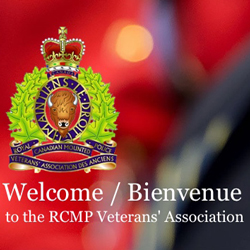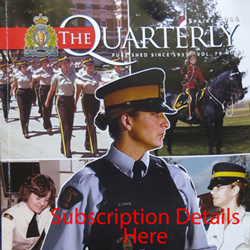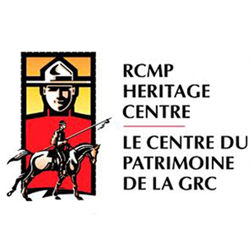Larry Burden’s This Day In The RCMP

The achievements and contributions of the Force have been built upon the individual contributions of many past Veterans. These contributions have largely been forgotten.
Veteran Sgt. Larry Burden ( #35982), who served in “E” Division for 20 years, has spent over ten years researching and summarizing these achievements by specific date. Nearly every day, Larry sends out an email message with a selection from his work in progress manuscript “This Day In The RCMP” to individuals interested in these historical notes.
In an effort to share his research to a large group, Larry has agreed to permit us to develop a webpage on our website. Each webpage will post Larry’s historical notations over the past week.
If you wish to contact Larry Burden or provide additional information about his research, please email him at larryburden8@gmail.com.
April 26th
1875-During the “march West” a section split off from “A” Division and headed north to establish a new post. The men who established Fort Saskatchewan were #O.2 Inspectors William Jarvis, and #0.20 Severe Gagnon, along with #5 Sergeant Major Samuel B. Steele, and Sub Constables #7 Richard Steele, #30 Thomas LaBelle, #18 Edward Carr, #107 J.S. Beaulieu, #17 Phineas Brunette, #195 Peter Coutts, #20 Patrick Curran,#244 Neil McIntyre, #264 Jean Dartigue, #289 George Elliott, #185 Joseph Halpenny, #354 James Murray, #40 Walter Ross, #313 John Ridley, #47 Samuel Taber, #301 Edward Thomson and #50 William Walsh.
1935– Honour Roll Number 55.#6352
Corporal Michael Moriarty age 48 was murdered, while attempting to serve a summons at Rosebud, Alberta.
David Knox had never been in trouble with the law before and he had been living on his farm by himself on a pension he received from the Great War, but when a bailiff who came to residence to serve him with an eviction notice Knox grabbed his rifle and threatened the bailiff. After reporting the matter to the police Cpl. Moriarty and #11811 Cst. Albert R. “Jeekie” Allen went to the Knox farm with a Summons. When Cpl. Moriarty got out of his police car to open the gate to the property, he was shot in the back by Knox. While under fire Constable Allen pulled to him to safety and sped off to the Doctor’s, but Moriarty died on the way. Cst. Allen then contacted the detachment and soon three additional constables; #10561 Richard Fenn, #11300 Douglas Forrest and #11468 John Skelton arrived accompanied by several armed farmers.
Shortly thereafter Knox was seen running across a field and the posse chased after him in their cars and attempted to corner him, but he retreated to a granary and began firing at them. The group returned fire and a two-hour standoff ensued. Finally, Knox stopped firing at the posse and after a lull, a member using his car as a shield, drove by the granary and saw that Knox had committed suicide. Moriarty was born in Ireland and had served with the Glasgow City Police and had been a British Bobby before he immigrated to Canada and joined the RNWMP in 1914. He initially served for three years until he left to join the Saskatchewan Provincial Police in 1917 where he served for one year and then joined the Alberta Provincial Police in 1918. He returned to the RCMP in 1932 when the Alberta Force was absorbed into the RCMP and served to his death. Having no family in Canada, the RCMP agreed to his brother’s request and had his body buried at the Holy Cross Cemetery in Lackawanna, New York.
1959-RCMP members provide VIP security for Cuban President Fidel Castro on his visit to Montreal.
1971– While on patrol in Burnaby BC #25458 Constable Maurice Riou received a general broadcast of robbery that had just occurred. Shortly thereafter he found himself chasing a car that was traveling at a high speed when it suddenly stopped. A man jumped out and yelled that the driver was having a having heart attack and needed assistance. As Constable Riou approached the vehicle, the man produced a .357 magnum handgun and shot at him. Riou shot back, killing the suspect and apprehending the driver. He was awarded a Commanding Officers Commendation for Bravery.
1988-Corporals, #28733 W. Randy Munro and #28876 Melvin W. Trekofski were conducting surveillance on two robbery suspects in downtown Vancouver. When the suspects put on disguises prepared to rob a branch of Canada Trust, the two officers intervened and arrested them. For their quick action and presence of mind the men were awarded Commanding Officers Commendations.
April 25th
1901– At the completion of the Boer War several members of the NWMP were granted free discharges to join the South African Constabulary. Among them were; #619 Charles Allen, #3589 James Moore, #2543 Reginald Thompson, #3599 John Stewart, #3326 Percy Waddy, #3426 Wilfred MacPherson, #3534 William Judge, #3514 Walter Crockett and #3583 William Hughes.
1936– Tragedy struck when #12537 Constable Charles Potter was boating New Brunswick’s St John River, with the son of #4958/O.229 Supt Ernest Salt when boat tipped over and Bruce Salt was thrown from the vessel and drowned.
1978– Honour Roll Number 156.
After checking a motor vehicle, at Saskatoon, Saskatchewan #31915 Constable Thomas Brian King was taken hostage and executed.
Many police officers have been killed in the line of duty but very few have been executed. Cst. Brian King had served in the RCMP as a radio operator from 1971 and converted to a regular member went the Force began accepting married men in 1974. After basic training he was posted back to Saskatoon. On the night of his murder two local teenaged “cop haters”; Darrell Crook and Gregory Fisher decided that they were going to kill a cop. After smashing out the tail lights in their car, they went for a drive hoping to get stopped by the police. When they were first pulled over by two members at 10:30 pm they chose not to act because they were even numbered, so they bided their time. Two hours later they were stopped by Cst. King on Highway #11. While King was dealing with the pair on the side of the road he was jumped and overpowered and restrained with his own handcuffs. After being forced into their car he was taken to a house in the city where they were turned away by the occupants when they saw that they had taken a policeman prisoner. The pair then drove to the Saskatchewan River and dragged him out of the car and after Darrell Crook pistol whipped Cst. King in the head with his own revolver, he shot him twice in the head and then the murderers tossed his body into the river.
While the execution was occurring, the police found Cst, King’s abandoned police car and everyone was searching for the missing policeman. Ironically the Saskatoon Police pulled over the murder’s car because of the broken taillights that they had used to bait the police. Darrell Crook bolted from the car and fled but his accomplice was arrested. Under questioning Gregory Fisher revealed how Crook had executed Cst. KING. Shortly afterwards the RCMP captured Fisher at a roadblock in a car traveling with his older brother.
Crook and Fisher were convicted for murder and received life sentences with no parole for 25 years. Brian King left behind his wife and three young daughters and was buried with full military honours at the RCMP Cemetery in Regina.
1995 – Commendation awarded to #40878 Constable Marc Trioreau when a car went into the water at Harbour Grace, Newfoundland. In an attempt to rescue the driver from the submerged car, Constable Trioreau entered frigid ocean waters, but could not retrieve the victim.
April 24th
1885 – After news of the massacre at Frog Lake on April 2nd reached General Middleton, he dispatched Colonel William Dillon Otter 1843-1929 to lead a column to relieve the NWMP garrison in the besieged town of Battleford Saskatchewan. After successfully relieving the town, Otter decided to take the fight to the Cree and Stoney Indians led by Chief Poundmaker. On May 2nd, he engaged the enemy in what has become known as the Battle of Cut Knife Hill and he and his troops were soundly defeated by Poundmaker’s forces.
1963– Honour Roll Number 120.#17334
Constable James Walter Foreman died of injuries sustained, when struck by an automobile on the shoulder of the highway near Sangudo, Alberta.
During a routine patrol Constable Foreman stopped to assist a friend, Mr. Irvin Purdy whose car had broken down on Highway # 43. The cars were placed face to face with emergency lights activated and Foreman was between the two vehicles pouring oil into Purdy’s engine when a car approached at high speed.
Mr. Purdy yelled but before they could move out of the way, the oncoming car smashed into the rear of Purdy’s car crushing them between the two-parked vehicles and then propelling them into the ditch. Constable Foreman was killed and Purdy later recovered from his injuries. No charges were ever laid against the offending driver.
Cst. James Foreman had served in the RCMP for over 11 years and left behind his wife Jillian and their two sons. He was buried at the Evergreen Memorial Gardens in Edmonton, Alberta.
1977– Constables #31022 R.J. Wyatt and #33160 Brian J. Donnelly were awarded the Royal Canadian Humane Association Certificate of Merit for rescuing a young boy, James Hill from the Red Deer River at Drumheller, Alberta.
April 23rd
1906– The Alberta Legislature sets the provincial speed limit at 10 mph in cities and 20 mph in the country.
1913– Honour Roll Number 39.
#4968 Corporal Maxwell George Bailey age 28 was killed at Grassy Lake, 40 miles west of Edmonton, Alberta while attempting to apprehend a man on a warrant.
36-year-old Oscar Fonberg had become paranoid because of the discovery of silver on his property and believed his mine had to be defended, but after he took a shot at one of his neighbors an insanity warrant was issued for his arrest. Four members of the RNWMP lead by Corporal Max Bailey were organized and dispatched to apprehend Fonberg at his home at Grassy Lake 40 miles west of Edmonton. As the members approached the house, Fonberg took cover in a dug-out and yelled at the police to go away or he would shoot. When the policemen refused Fonberg began shooting, killing Corporal Bailey with a shot to the head.
The members returned fire and in the gun battle #5393 Constable Lambertus Stad was shot in the arm as he tried to pull the corporals body to safety and in the shootout #5535 Constable Samuel Whitley was shot in the groin. The gunman rushed from his position in the dugout and ran back to his house and continued to shoot at the policemen. #5288 Constable Reginald Tetley responded by tossing burning hay down his chimney and through a window in an attempt to smoke him out of the building. But the house caught on fire and as it burned to the ground Oscar Fonberg fled from the house and ran off into the bush.
The body of Cpl. Bailey was loaded onto a wagon and the men went to the nearby village of Tofield for medical help and there Cst. Tetley phoned the Edmonton Detachment for help. The next morning eight members and ten special constables arrived and began the manhunt for Oscar Fonberg. Speculating that he would return to his farm for supplies, the men waited in the dark and cold and when he showed up at 03:30 am shots were exchanged and the gunman was wounded but he managed to flee again into the bush.
While the posse continued their search for Fonberg, additional members began trickling in from other detachments including #4843 Constable A.C. McPhailwho had traveled from his detachment at Fort Saskatchewan, over 60 miles away. As he rode to the scene he encountered a farmer driving his horse and wagon coming towards him, when they met McPhail found the wounded Oscar Fonberg sitting beside the farmer in need of medical attention and more than happy to be taken into custody.
Fonberg was convicted of manslaughter and sentenced to life imprisonment. Constables Stad, Whitley and Tetley were granted $50 each from Fine Fund for their “good services in the attempted arrest of Fonberg”.
Cpl. Maxwell G. Bailey a native of Piccadilly England had been in the RNWMP for five years. Following a large military funeral, he was laid to rest at the 16thStreet Cemetery in Edmonton.
1934– Retired Sergeant #4608 H.U. Green of Dauphin Manitoba was awarded a bronze medal by the Natural Society of Manitoba for outstanding excellence in original research in natural history. Green became a well-known nature writer who published under the name of “Tony Lascelles” He received the award for his research on the Elk of Riding Mountain which was published in the Ottawa Field Naturalist in 1934.
1981– The 35thAnniversary of RCMP Grumman Goose “C-FMPG”. The Grumman Goose a twin-engine amphibious flying boat that had a wingspan of 14.95 m (49 ft) was a truly unique airplane.
Only 345 G21A’s were built, and they could go nearly anywhere and was the ideal aircraft for use in the Pacific Northwest of British Columbia. CF-MPG “The Goose” was purchased by the RCMP from the Royal Canadian Air Force in 1946 for $50,000. To celebrate the anniversary of “MPG” the Officer Commanding Prince Rupert Sub Division commissioned a lapel pin for members of the sub division to wear on their uniforms. The Goose was finally retired in 1995 (see September 29 1995)having achieved the status of having been used in continuous public use longer than any other Canadian aircraft.
April 22nd
1926– The far reaches of the north have seen some extraordinary men; included in this select group was one notable adventurer policemen #4919 / O.221 Inspector Alfred Herbert Joy left his home in Bedfordshire England and joined the Royal North West Mounted Police in 1909 and served until 1932 when he died while still serving as a member of the RCMP. A noted Arctic explorer, Joy rose through the ranks quickly (Cpl. 1912, Sgt. 1916, S/Sgt. 1921 and Commissioned in 1927).
In 1920, Sergeant Joy accompanied by #O.173 Inspector J. W. Phillips conducted a lengthy patrol of the Belcher Islands (southeast Hudson Bay) on a murder investigation.
On this date in 1926, Inspector Joy with #10119 Corporal Robert Garnett and Inuit guide, Nookapeeanguak journeyed by dog sled from Craig Harbour to Grethasoer Bay and Exel Heiberg Island via Jones Sound and the west coast of Ellesmere Island, returning on May 26 1926 after traveling a distance of 975 miles (1,570 kilometers).
In 1927, he opened the first detachment at Bache Peninsula.
In 1929, with #10303 Sergeant Reginald Taggart and an Inuit guide patrolled the Sverdrup Islands from Dundas Harbour to Bache Peninsula, a distance of 1,700 miles (2,735 kilometers) in 81 days. On this trip he and the others had the harrowing experience of being attacked by a polar bear that had been tracking them and clawed its way into their igloo in the middle of the night.
Tragically Joy died of a stroke at the age of only 43 while in Ottawa on the day he was to be married to Miss Carmel Murphy. Speculation has been raised that he committed suicide because he knew that getting married would mean that he would never return to the arctic. No proof of the allegation has ever been provided and is unlikely. A man of Joy’s character and bravery would hardly be afraid to call off a wedding. Carmel Murphy buried Alfred Joy in her family plot in Ottawa and she never married.
1940– Commendation awarded to #12838 William McKayseff for his work on a Break, Enter and Theft case in Manitoba.
1941– Commendation issued to #11211 Edward Sinnema for the rescue of man trapped on the ice in St Lawrence River at the St Regis Reservation.
1942– #13485 Don Carrothers, #12030 Paul Clearwater, #12413 Don Bliss, #13309 John Nightingale, #10831 Richard Holmes and #133128 George Crawford became part of the 6threinforcement draft to Canadian Provost Corps in WWII.
1961– Honour Roll Number 101.
#20366 Constable Ronald Arthur Ekstrom age 22 was killed in an on-duty traffic accident near Lytton, BC.
Constable Ron Ekstom had only been in the Mounted Police for three years when he had taken a friend on a “ride-along”. Around 9:00 pm they were driving south on highway #12 when they noted a car parked on the side of the road. While Cst. Ekstrom was checking the vehicle over he noted another car coming towards him at a high rate of speed. When the driver failed to stop, Cst. Ekstrom chased after him in his police car.
As they raced towards Lytton at speeds in excess of 85 miles per hour, he radioed ahead and requested a roadblock be set up. As he sped down the highway, he encountered a vehicle pulling out of the local drive in theatre. When he tried to go around it he lost control of his car and skidded down the highway and went over the embankment and smashed into a tree some 200-yard down the slope. Cst Eckstrom was killed instantly but his passenger survived.The suspect vehicle that he was pursing crashed shortly afterwards and the driver, Charles Alexander Harrington of Vancouver fled the scene on foot. He was later arrested at his home and convicted of criminal negligence.
Constable Eckstrom’s body was returned to his family in Lethbridge Alberta where he was buried at the Mount Memorial Gardens Cemetery.1977– The Meritorious Certificate from Most Venerable Order of the Hospital of St. John of Jerusalemwas awarded to #33144 Constable Karen J. Hilland for performing mouth-to-mouth resuscitation on child who had fallen into well near Nisku, Alberta. Her efforts were successful in saving the life of Holly Ferguson.
1979– On Sunday night, April 22, 1979, 25-year old #33612 Constable John Buis and his partner #29925 Cst. Jack Robinson were in plainclothes patrolling the area around Kingsway and Gilley in Burnaby British Columbia. At 8:30 p.m they encountered a white Lincoln Continental with Texas licence plates speeding east down Kingsway. When they pulled the car they discovered that there were seven people aboard.
19-year-old Patricia Bennett, and Gustave Gyulay age 25 accompanied the driver, 28-year old David Barnes, in the front seat.
Before the officers could approach the vehicle, Barnes got out of the car and walked back to them with the vehicle registration, but not his licence, which he claimed had been stolen in Washington State.
Cst. Buis’ attention was then drawn to Gustave Gyulay, who appeared to be very nervous. Buis asked Gyulay to step out of the vehicle whereupon Gyulay stated that he had been just released from prison and was on mandatory supervision.
#27726 Cst. Merv Korolek then joined the proceedings as a backup unit and was asking for identification from the remaining members in the car, while Cst. Buis went back to the patrol vehicle to check the identification of Barnes and Gyulay. While the officers were gathering identification, nobody saw Gyulay reach into the front seat of the Lincoln and remove a sawed-off shotgun and hide in the back of his pants, underneath his jacket.
While Cst. Korolek searched the rest of the vehicle, he found ammunition and a riflescope inside the car. Barnes was then ordered to open the trunk of the car, where a sawed-off rifle in a plastic bag was discovered.
After Buis queried the vehicle and the suspects, he was advised that the vehicle was stolen. When John Buis attempted to advise Cst. Robinson what he had discovered, Gyulay, who was standing on the sidewalk, drew the shotgun from behind his back and shot him.
Buis was hit with shotgun pellets in his inner thigh, and both Robinson and Barnes were also hit with pellets. When Buis fell to the ground Robinson grabbed his revolver and fired, a shot at Gyulay, and Korolek fired multiple shots as well.
A second shot from the shotgun, missed the officers so Gyulay threw the shotgun on the street, and two rounds fired by Cst. Robinson hit him in the right knee and left ankle. Although he had been wounded Gyulay was able to rush to the body of Cst. Buis who was laying on the roadway, grab the constable’s gun and place it to the back of Buis’ head and threaten to kill him if the officers didn’t drop their guns.
In recollection John Buis stated: “I remember him taking my gun from me, but I was pretty out of it at that moment.” “When he pulled the hammer back on my gun, I was wide awake.”
“It’s not something you can describe because everything in your life does flash before you,” he said. “I thought about my wife, my parents, my brothers, the important things in my life.”
By then, several other Burnaby RCMP members had arrived on the scene and succeeded in talking Gyulay out of doing anything more rash. Then he threatened to commit suicide, but, after a short negotiation, Gyulay was convinced to give himself up. Constable Buis was then rushed to hospital and Gustave Gyulay taken into custody.
“Thank God I’m tall because I was shot in the thigh,” said Buis. “If I were any shorter, the shots would’ve killed me.”
All three constables were awarded a Commanding Officers letter of Appreciation for their actions. Gustav Steve Gyulay died in 2008.


 April 23, 2019
April 23, 2019 






